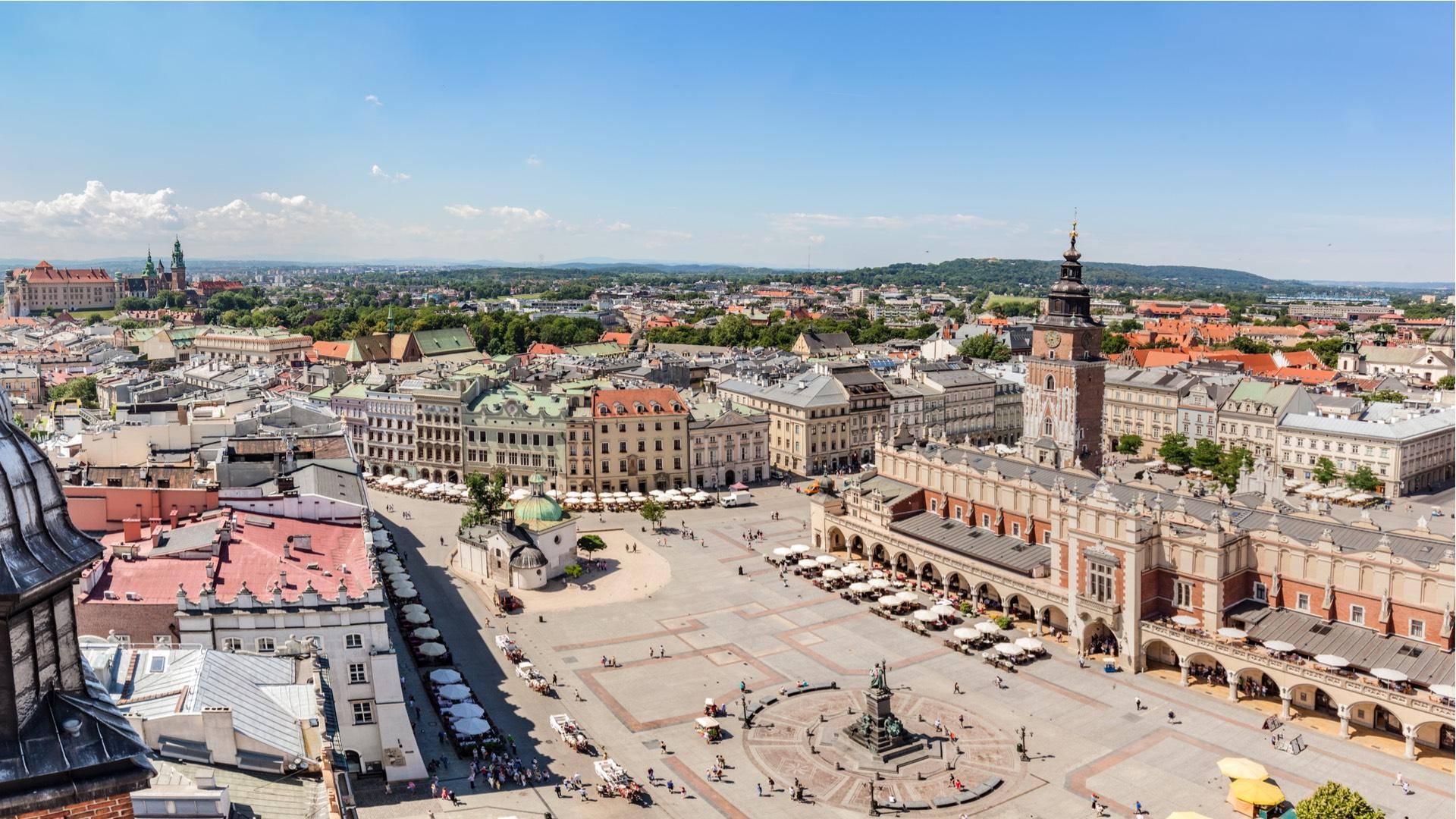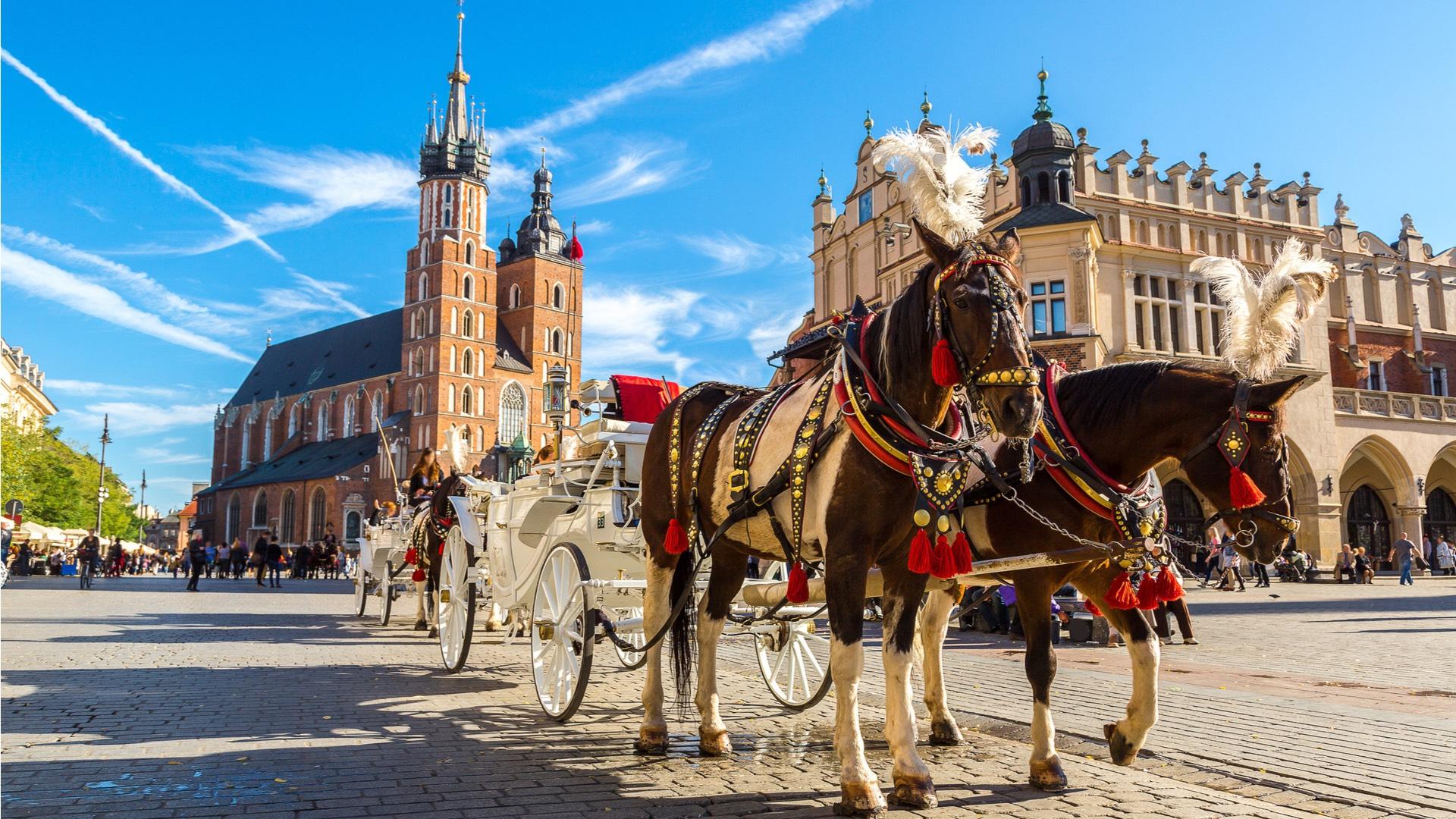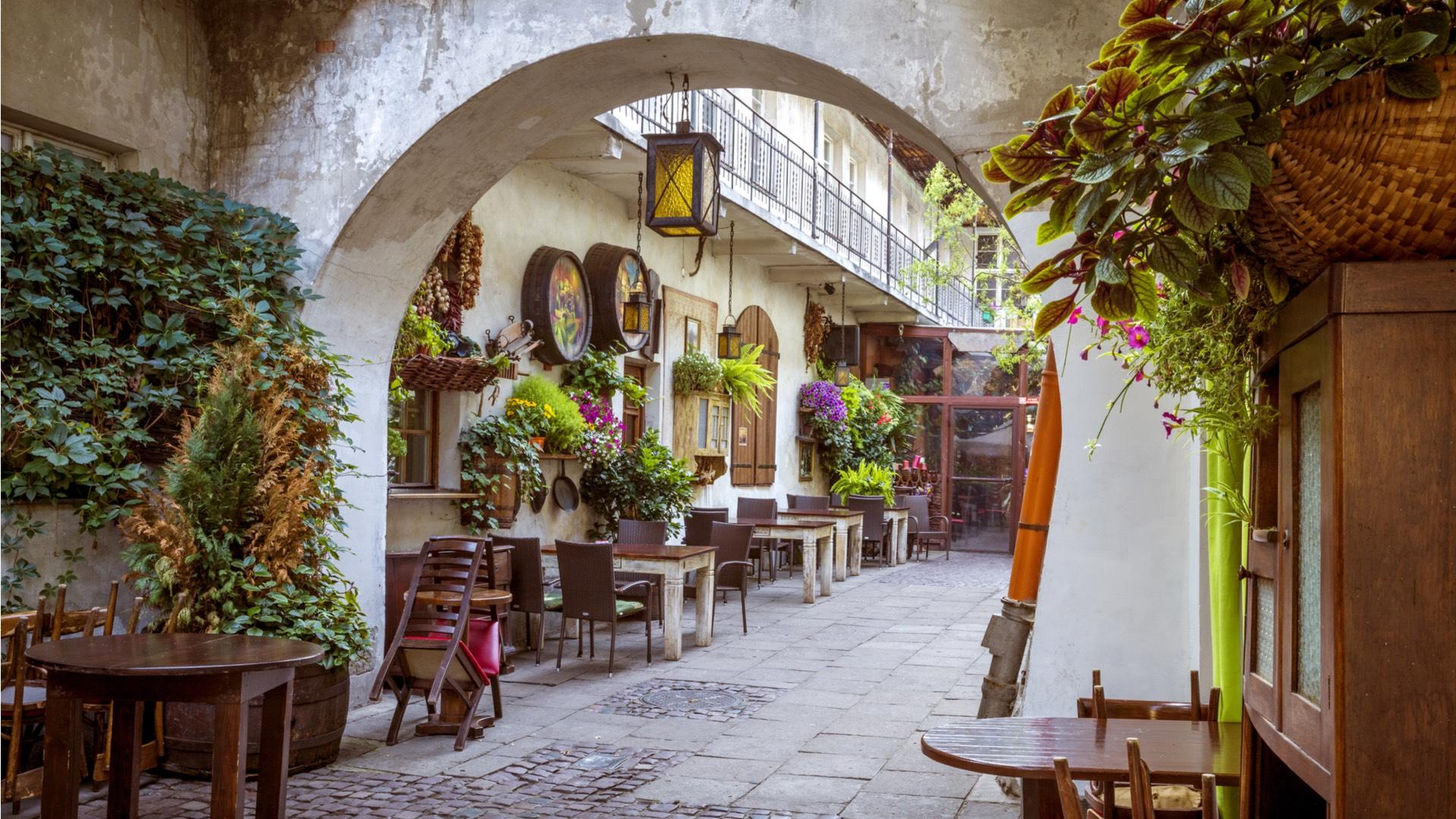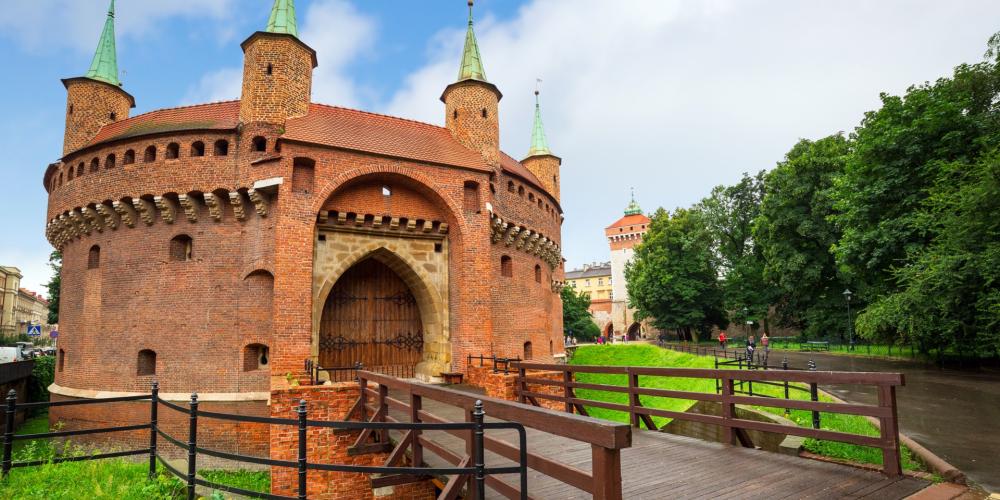Historic Centre of Kraków

Kraków's historic centre was entered on the first List of the UNESCO World Cultural and Natural Heritage in 1978, along with the nearby Wieliczka Salt Mine (which was later combined with the Saltworks Castle and Bochnia to create the expanded Royal Saltworks of Wieliczka and Bochnia UNESCO site). It's worth spending a few days in Kraków, but if you have only one day to spend in the city, you should definitely follow the Royal Route leading through the city centre, where you'll be able to see the most important monuments in Kraków. You'll cover the route that Polish kings travelled throughout the ages.
Start with the Barbican and St. Florian's Gate the most beautiful remnants of medieval fortifications of the city. Behind the Gate don't forget to take a turn left; after taking a few steps, you can admire the impressive Juliusz Słowacki Theatre, dating back to the 19th c., and then after a few steps right from the Gate to a lovely side street with the former Arsenal and the Princes Czartoryski Museum. Next, you will walk to the Main Market Square by fashionable Floriańska Street.

You can spend many hours on the Square, taking strolls or drinking coffee in one of its many cafes. The Square is teeming with life all year round and at every time of day, with tourists, buskers, mimes and dancers. You're surrounded by magnificent townhouses and remarkable monuments: St. Mary Basilica with sumptuous interior decor and the 15th-century Altarpiece by Veit Stoss—a world-renowned masterpiece.
You'll hear the heynal (a trumpet call), played hourly from the Basilicas tapering tower to the four winds—an audible symbol of Kraków. You can climb up the tower, as well as the City Hall tower, located in the Market Square, with its spectacular view.

The central place in the Square is taken by the Cloth Hall, a former shopping centre. Today, as in the past, they house souvenir stalls. Many of the keepsakes are made manually of silver, amber, wood, glass or leather. If you are looking for an original souvenir or gift, a visit to the Hall is a must. The first floor of the edifice houses an art gallery with works of eminent Polish painters. On the ground floor you'll find the entrance to the Rynek Underground Museum, open to visitors since 2010. This archaeological park, with a multimedia spectacle, provides an unforgettable journey in time to the Middle Ages. Wandering around the Main Market Square surrounding streets, you'll see how beautifully the city was designed in medieval times. You'll love the mixture of architectural styles including Romanesque, Gothic, Renaissance, Baroque, Rococco, classicism, secession, which create here a diverse and unique, but coherent whole.
It is worthwhile to head from the Square to the historic university district and see Collegium Maius, the oldest surviving building of Jagiellonian University, founded in 1364, and still operating today. Kraków is a lively academic centre, with many higher-education institutions, and students from all over the world. Next to Collegium Maius you'll see the University collegiate church St. Anne's Church. Moving on, go to Grodzka Street, where numerous exquisite old churches and cloisters: of Dominicans, Franciscans, St. Peter and St. Paul, St. Andrew. Further on, along Kanonicza Street (the oldest street in the city) with a several Bishop's Palaces with beautiful gates and yards, you will reach the Wawel Hill, on which one of the most stunning royal residences was established by Polish princes and kings, beginning in the 11th century.
Video: See the Castles and Cathedrals of Krakow’s Historic City Center - National GeographicMajestically towering above the Vistula bank, Wawel is a feast for eyes and soul. In order to see all that, you need to spend a whole day here. Visit the Cathedral—a coronation and burial place of the majority of Polish kings— where you can see their magnificent tombs and chapels. Even big artefacts here were made of precious metals, such as the silver coffin-reliquary of St. Stanislaus from the 17th c. or a gold-plated dome of the 16th-c. Sigismund's Chapel. You may go down to the vault to see the Tombs of the Kings and sarcophagi of Polish National Poets, and then climb the tower, to marvel at the biggest bell in Poland the Sigismund Bell. Next, go to the yard of the Royal Castle a Renaissance gem, where you can enter the palace interior and see the Royal Treasury and Armoury.

The most impressive way down the Hill leads through The Dragon's Pit, where the legendary Wawel Dragon was said to live centuries ago. When you leave the cave, it will bid you farewell with its fiery breath. Then you'll find yourself on the bank of Vistula, where you can rest, or continue sightseeing along the river bank to the Kazimierz District. On the way, you'll pass the interesting Pauline Monastery on the Rock (on Skałka), the massive St. Catherine's and Corpus Christi gothic churches, and the former Jewish District of Kazimierz. Jews lived there from the 14th c. until World War II. There you can visit historic synagogues, old Jewish cemeteries, mikvah and cultural centres, all restored to their original beauty and distinctness. After sightseeing, roam the narrow streets, peep into a yard, into little shops, pubs or antiquarian bookshops. And if you stay until the evening, you will really feel the city's magic.

